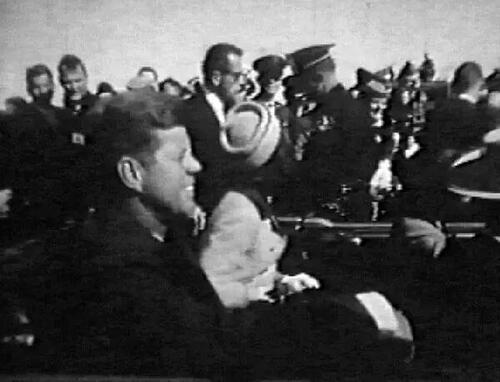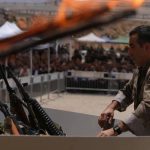Authored by Jack Phillips via The Epoch Times (emphasis ours),
A witness to the assassination of President John F. Kennedy spoke out for the first time in 60 years and refuted a key claim regarding the 1963 incident and a “magic bullet.”
Paul Landis, an 88-year-old former Secret Service agent, was just a few feet away from when President Kennedy was shot and killed in Dallas, Texas. At the time, he was assigned to protect Jackie Kennedy, the former first lady.
Mr. Landis, in a recent interview with the New York Times, cast doubt on the government-backed Warren Commission’s finding that a “magic bullet” struck and exited the president before it struck then-Texas Gov. John Connally Jr., a theory that has been the subject of criticism for decades and has helped fuel a range alternative theories about the former president’s assassination. Officially, the U.S. government and Central Intelligence Agency (CIA) has maintained that a lone gunman—Lee Harvey Oswald—was the sole perpetrator.
Based on discrepancies between things that he witnessed during the assassination and the Warren Commission’s report that investigated the president’s death, he said “I’m beginning to doubt myself” and that “now I begin to wonder.”
In the interview with the paper, published on Sept. 9, Mr. Landis recalled hearing multiple gunshots at Dealy Plaza in Dallas as he went behind President Kennedy’s limousine, seeing the president moving forward after being shot in the head. After the assassination, Mr. Landis recalled picking up what he called a near-perfect-condition bullet from the back seat of President Kennedy’s limousine, near where the president had been sitting.
The former agent then transported the bullet to the hospital where President Kennedy was taken and put on a stretcher to be examined. The reason why he took it is because he believed someone might pocket the bullet, which he did not describe in detail, as a keepsake.
Mr. Landis suggested in the interview that the reason why investigators believed that the “magic bullet” struck both the former president and the Texas governor, Mr. Connally, is because the bullet that Mr. Landis discovered was later found on a stretcher belonging to Mr. Landis. It wasn’t until the NY Times interview this week that Mr. Landis confirmed that it was he who found the bullet and placed it there.
He added that he did not believe the bullet went too deeply in President Kennedy’s back before, according to him, “popping back out” before he was removed from the limousine.
“It was a piece of evidence that I realized right away [was] very important,” Mr. Landis told the outlet. “And I didn’t want it to disappear or get lost. So it was, ‘Paul, you’ve got to make a decision’—and I grabbed it.”

After the incident, he recalled that “there was nobody there to secure the scene, and that was a big, big bother to me,” adding, “All the agents that were there were focused on the president.”
The paper quoted him as saying that it wasn’t until 2014 that he realized that the location of the bullet’s recovery that was cited by him was different than what was cited in the Warren Commission. He then checked with several officials but received skepticism, with officials saying he filed multiple written reports himself with the Commission decades ago.
According to the paper, Mr. Landis said he filed two separate reports with the Warren Commission and neither statement made reference to finding the near-perfect bullet or placing it on a stretcher. Instead, he reported only hearing gunshots. Mr. Landis said he was in a state of shock and hadn’t slept much when he filed the statements.
The Warren Commission has long dismissed claims that the bullet came from President Kennedy’s stretcher.
Explaining why he hasn’t spoken out for 60 years, the former agent said, “I didn’t want to talk about it.” He left the Secret Service months after the assassination. “I was afraid. I started to think, did I do something wrong? There was a fear that I might have done something wrong and I shouldn’t talk about it,” he said.
Historian James Robenalt, who helped work on Mr. Landis’s forthcoming memoir, said his eyewitness account raised the possibility of there being more than one gunman.
“If the bullet we know as the magic or pristine bullet stopped in President Kennedy’s back, it means that the central thesis of the Warren Report, the single-bullet theory, is wrong,” he told the NY Times.
Writing for Vanity Fair, Mr. Robenbalt posited that if the “magic bullet” didn’t hit both President Kennedy and Mr. Connally, there may have been a separate shot.
“The FBI recreation suggests that Oswald would not have had enough time to get off two separate shots so quickly as to hit Connally after wounding the president in the back,” he wrote. Mr. Oswald, according to officials, had used a bolt-action Carcano Model 38 infantry carbine.
Referring to his memoir, meanwhile, Mr. Landis said that “there’s no goal at this point. I just think it had been long enough that I needed to tell my story.”
Loading…











